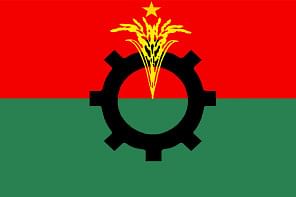Debate about number of victims not over yet

Even two years after the Rana Plaza collapse, the debate over the total number of unidentified victims rages on.
So far 206 of the dead workers, whose identity was initially unknown, have been identified through DNA tests, the Centre for Policy Dialogue said in a report yesterday.
The government couldn't collect any information about 85 victims. As their identity couldn't be known, their family members didn't qualify for any financial support, said the think tank.
Labour Secretary Mikail Shipar, however, put the number of unidentified victims at 62.
Identity of 166 workers was initially unknown. Of them, 104 have been identified so far, he told this correspondent.
"On the basis of various claims, we are now trying to know about the 62 victims by contacting the local administration offices," said Shipar.
The nine-storey Rana Plaza that housed a number of readymade garment factories collapsed on April 24,
2013, killing more than 1,100 people, mostly garment workers, and injuring many others.
At a programme in the capital's Brac Centre Inn yesterday, CPD Additional Research Director Khondaker G Moazzem said 1,134 workers were found dead while 2,535 wounded workers were rescued.
In his survey report "Moving Beyond the Shadow of the Rana Plaza Tragedy: In Search of a Closure and Restructuring Strategy", Moazzem touched on the issues of payment of compensation, treatment of the victims, future impact on businesses, suspension of the GSP and future action plans for the garment sector.
"There has been erratic information from different sources regarding the total number of missing workers," he said.
Despite various initiatives, the victims and their families are not at the same level compared to their condition before the Rana Plaza collapse, he learnt through telephone interviews of some of the victims and their family members.
"The living condition is very poor for the severely injured workers, and for families whose members were killed but are yet to be identified. Among the injured workers, few are employed locally in off-farm jobs after receiving training under various initiatives by different organisations," according to the report.
The respondents, including family members of the missing workers, mentioned that they received some financial support from organisations. But the amount varied widely from as low as Tk 75,000 to as high as Tk 12 lakh.
The difference was mainly because of varying levels of income as claimed by the victims and the various amounts of money they received (in two instalments) from the Rana Plaza Trust Fund.
"The amount of financial support received by victims and their families so far is insufficient to meet their needs although they were promised complete financial support to cover their monthly expenses as well as medical expenses for their treatment," said the report.
On the transformation the sector went though after the incident, Moazzem said it is significant for national and international factors.
"The restructuring of the sector would provide it with improved competitiveness which would be beneficial for the sector. New competitors are emerging in the global market which would change the global sourcing dynamics."
On the post-Rana Plaza export scenario, the report said the conclusion was that the export growth of garment products might have limited scope to be associated with the tragedy though the entrepreneurs often complained about the adverse impact on export.
"A detailed analysis on products, buyers' strategy in sourcing orders from different markets, buyers as well as consumers' perceptions of Bangladeshi products after the tragedy would enable us to determine the cause and effect of the changing pattern of export of apparels from Bangladesh."
Bangladesh's export to the European market during post-Rana Plaza period is even more inconclusive. After attaining considerable growth in both categories of products in 2013, Bangladesh's export experienced negative growth in 2014.
However, performance of a number of major competitors, including China, India, Vietnam and Indonesia, was disquieting in the European market. Pakistan and Cambodia are found to maintain consistent positive growth both in knit and woven products during post-Rana Plaza period.
Bangladesh's performance has been quite impressive till date with regard to implementation of various activities related to USTR (United States Trade Representative) action plan.
The USTR should take the recent developments positively and consider reinstatement of the GSP facility for Bangladeshi products in the US market in the near future if Bangladesh outdoes the present rate of achievements in terms of implementation of reforms, it added.

 For all latest news, follow The Daily Star's Google News channel.
For all latest news, follow The Daily Star's Google News channel. 



Comments